THE DINGY SKIPPER may not have the rainbow, brilliant iridescence of a Peacocks’ blazing wings. It may not ignite one’s curiosity as much as the nomadic wanderings of the Orange Tip, as it flutters past streams and meadows. Nor possess a Painted Lady’s olympian stamina as it leaves South Africa in search of our ancient, Albion shores. It is mostly brown and what many may consider a fairly dull butterfly. The type of butterfly that would perhaps scarcely divert your gaze as it fluttered past. Mostly brown and fairly drab, one might surmise. Indeed, the name Dingy Skipper suggests that this butterfly is the drabbest of all British butterflies.
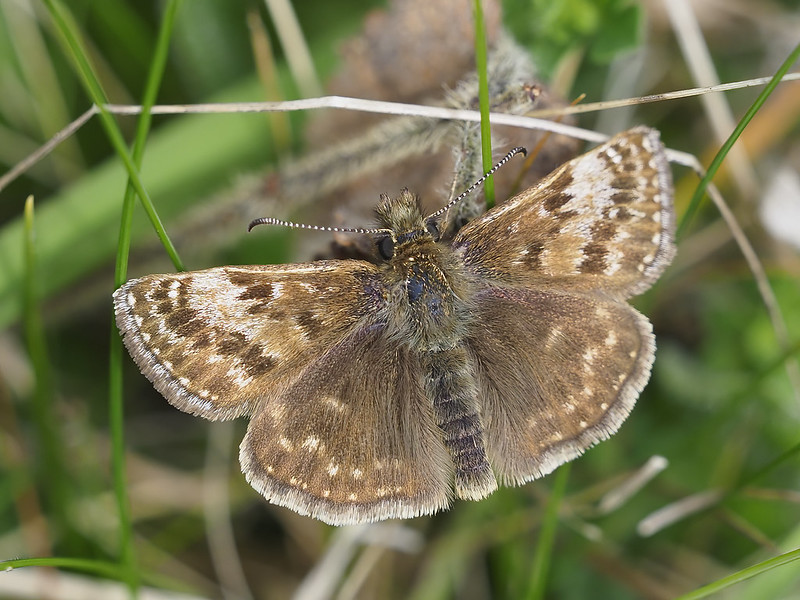
Dingy or beautiful? With delicate patterns and a subtle mix of contrasting greys and browns, this skipper is anything but drab!
Despite its unfair and unflattering name this butterfly is anything but drab. If looked at closely, newly emerged specimens possess a subtle mix of contrasting greys and browns that are quite beautiful. With the passage of time and the loosing of their scales, one would have to concede that the butterfly does take on a more uniform and drab appearance. Then again, surely the same can be said of most things that age.
However, beauty is more than skin deep and like all skippers, it possesses a strong, plucky character that is highly engaging. Although there is a superficial resemblance to the Grizzled Skipper, the Dingy Skipper is more likely to be confused with the Burnet Companion Euclidia glyphic or Mother Shipton Euclidia mi day-flying moths with which it often flies.
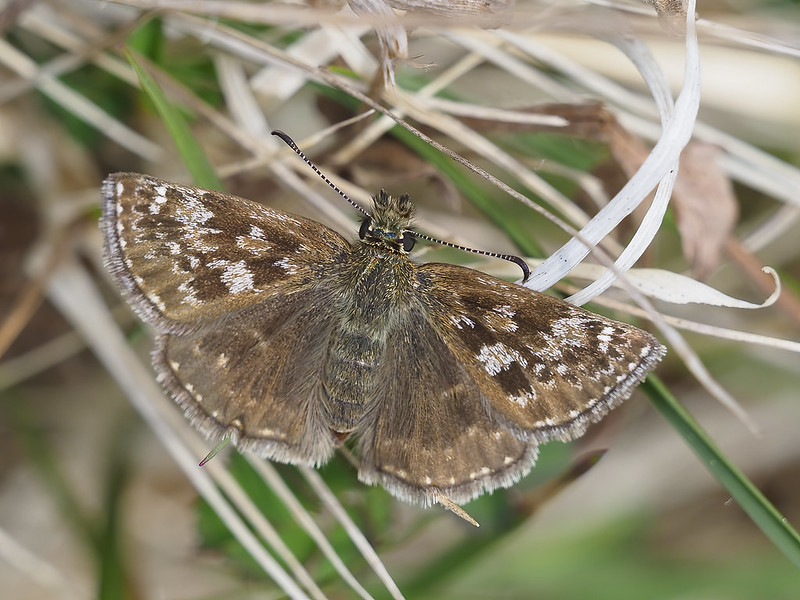
This beautifully camouflaged butterfly has a robust and stocky body. It is perhaps the most moth like of all British butterflies and has a superficial resemblance to the Grizzled Skipper.
It is a sad fact that most of our butterfly species are in decline and the Dingy Skipper is, unfortunately no exception. It’s not red listed nor classed as rare but it’s nevertheless getting harder to find. The main threats are habitat loss due to inappropriate management of grassland, woodlands, brownfield sites and agricultural intensification. Increasingly so, where meadows had been ploughed into huge butterfly-unfriendly prairie fields during decades of intensive arable farming. These loses lead to a fragmented landscape that hampers the ability of this species to reach new areas and for recolonisation following local extinctions.
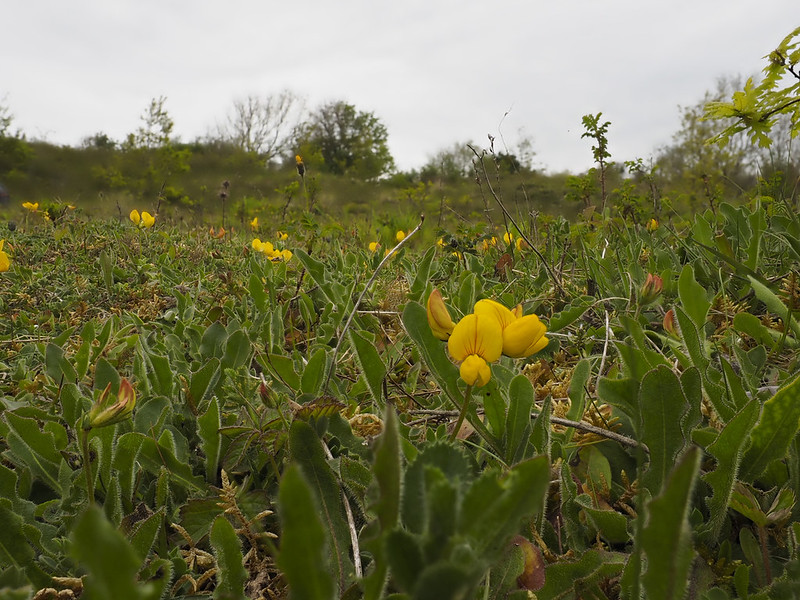
Yellow flowers of Common Bird’s-foot-trefoil, a larval food plant, at Merthyr Mawr Warren, South Wales.
Dispite the decline in numbers, the Dingy Skipper has a fairly broad distribution, its stongholds being undeniably the south-facing chalk and limestone grasslands in central and southern England. It can also be found in coastal areas of South Wales where the butterfly can be seen basking on patches of bare ground, such as on sand and stones, in full sun. The site of Merthyr Mawr Warren is a particular favourite of mine and I’m excited to show pictures of my recent visit there. The sunny, sheltered sand dunes with their sparse grass sward, interspersed with patches of bare ground, provided an ideal habitat. Better still, there was also plenty of the yellow flowers of Common Bird’s-foot-trefoil (larval foodplant of the Dingy Skipper).
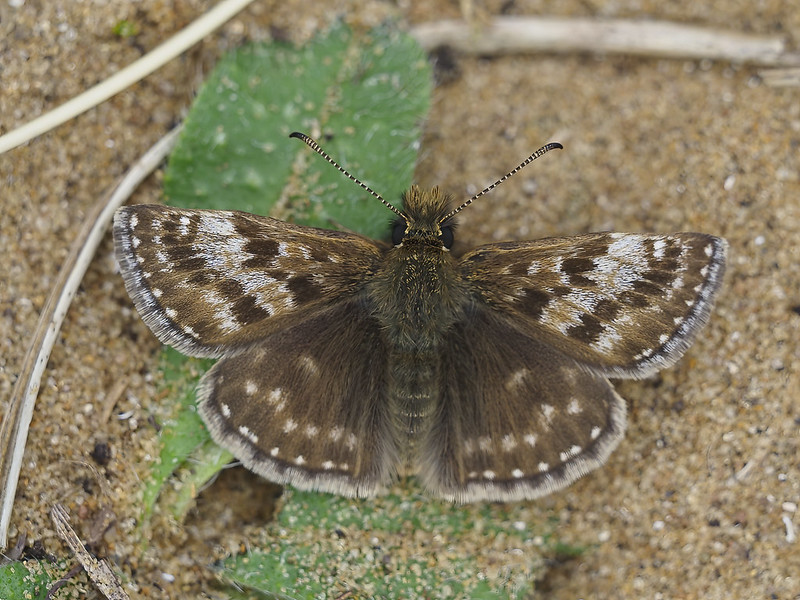
Sun bathing on the hot sand, this Dingy Skipper is enjoying a much earned rest from pursuing females and guarding-off competing males.
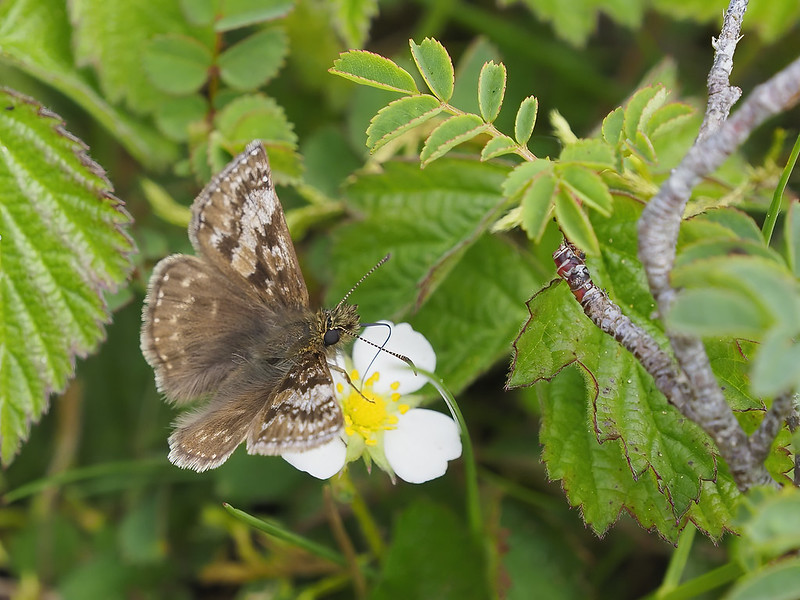
Dingy Skipper feeding on Wild Strawberry.
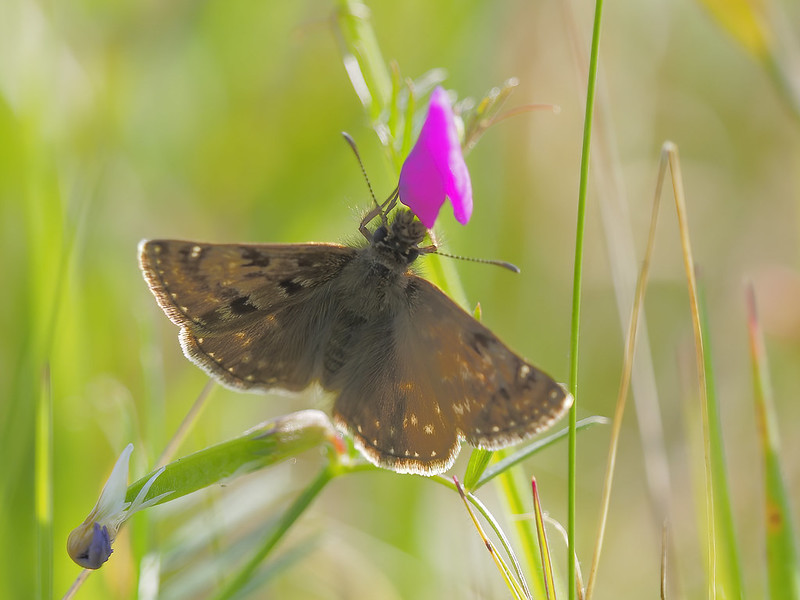
They will also feed on whatever suitable nectar sources are available
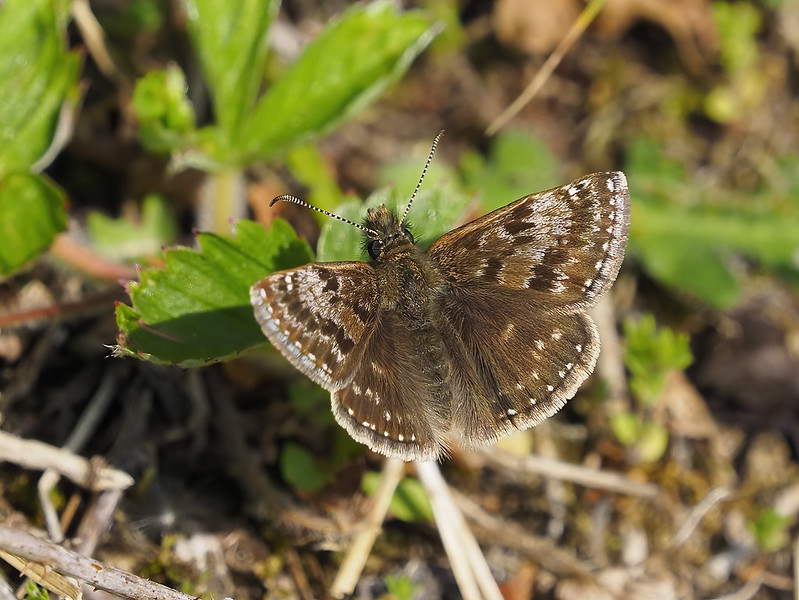
When egg-laying, the female will crawl over the plant before depositing a single egg on the upper side of a leaflet, close to its base.
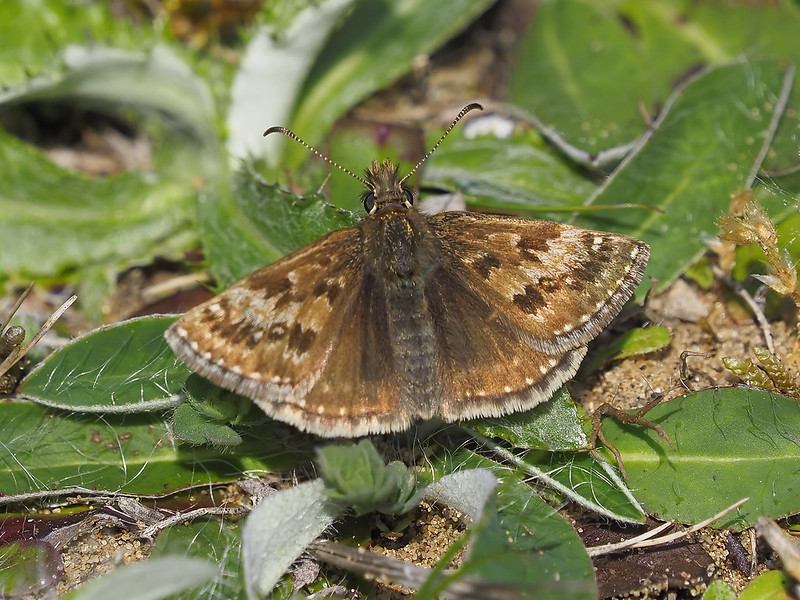
Most likely seen on open, sunny habitats with patches of bare ground and plentiful food plants.

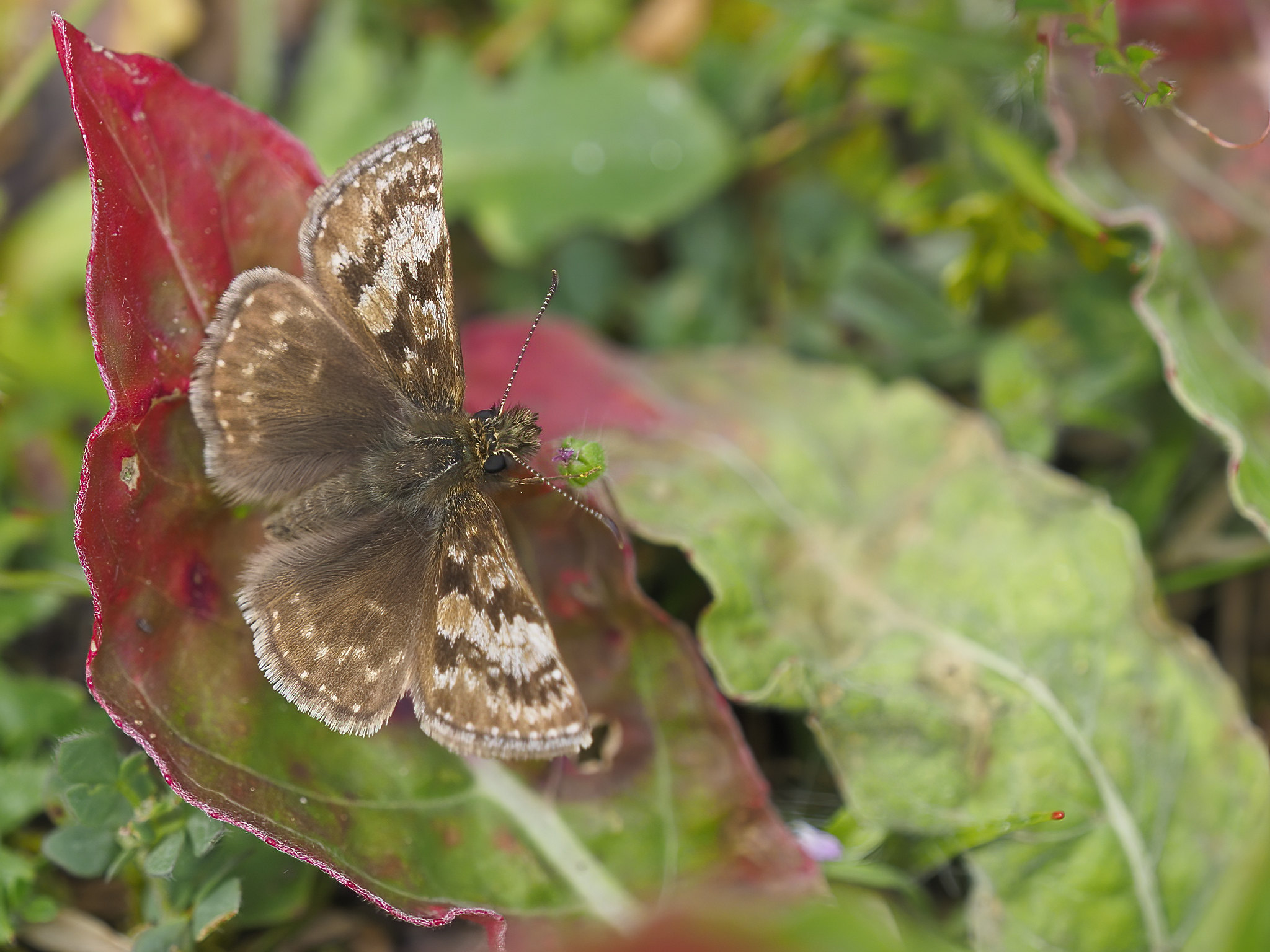
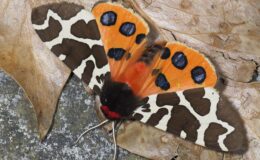

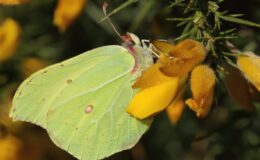
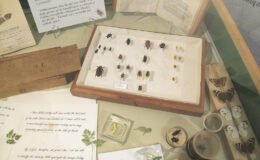
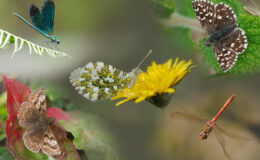
Leave a Comment